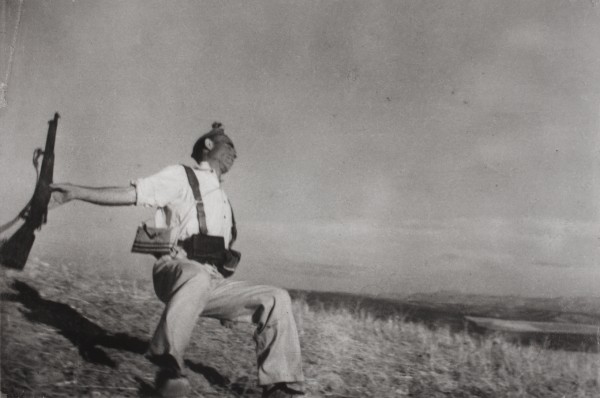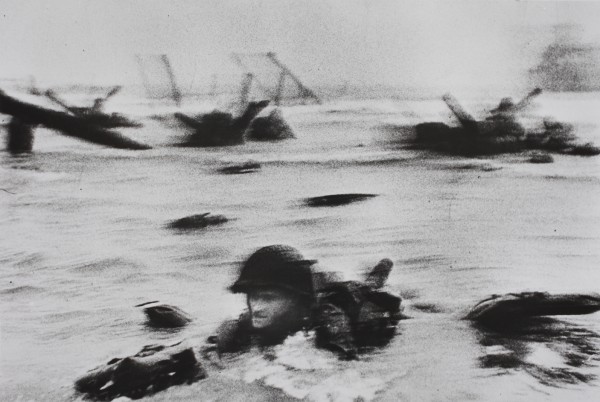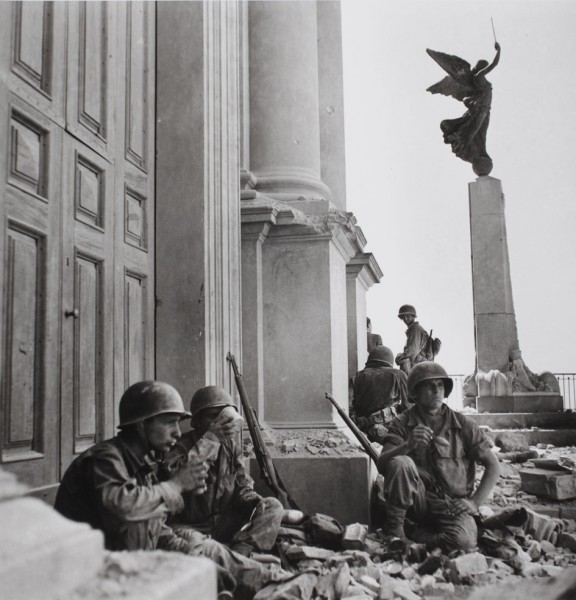"... if your pictures aren’t good enough, you aren’t close enough." (ROBERT CAPA)
The exhibition will present the most significant works of Robert Capa – American news photographer of Hungarian origin – from the collection of the Hungarian National Museum. Presented photographs make up one of three series of Capa’s work, selected for the public from 1990 to 1992 by Cornell Capa (brother of Roberta Capa) and Richard Whelan (friend and biographer) from the author’s heritage in the International Center of Photography (ICP) in New York. In 2008, the Hungarian National Museum purchased the third of these series entitled Robert Capa Master Selection III.
Robert Capa, his civil name being Endre Friedmann, was a photographer autodidact. Already at an early age, he was influenced by the ideas of poet Lajos Kassák, who had also instructed him about Hungarian and American social photography of early 20th century. On the basis of his two key interests – politics and literature – he decided to become a journalist. As a result of his political activities and problematic contacts, he first left Hungary and moved to Germany in 1931, and later to France in 1933. Following a difficult period of almost abject poverty, in the spring of 1934 in Paris, he met his successful compatriot André Kertész, who taught him hardware to photograph and helped him find a job. During this period, Capa met also his future lifelong friends Davida Szymin (Seymour) and Henri Cartier-Bresson. With a series of photographs from the contemporary political life of the left-wing People’s Front for the Paris-based newspaper Regards, Capa entered the world of professional photographers. Thanks to series of photographs from the Spanish civil war, he stepped into the spotlight of international photo-journalism in 1936, and began cooperating with the famous American journal Life. At the turn of 1930s and 1940s, he alternately created reports with political, war, social (orphanage in the French city of Biarritz), but also sports topics. Following the outbreak of WWII, he continued working as a photo reporter for Life and Collier’s in Europe and northern Africa. In 1944, he captured authentic images of the D-day disembarkation of the Allied Forces in French Normandy. After the end of WWII, he obtained American citizenship and spent several months in California, where he also entertained the idea of becoming a director/producer. Together with friends and new acquaintances (George Rodger and William Vandivert), he founded the Magnum international photographic agency in 1947. After moving to Paris, he decided to fully concentrate on the work for his agency and writing travel literature. There, he met with famous artists like Pablo Picasso, Ernest Hemingway or John Steinbeck; in this period, he also focused on portrait photography. Starting in late 1940s, Capa continuously cooperated on travel articles (e.g. for the Holiday journal) and various other publications. Occasionally, he returned to the work of war photo-reporter, which eventually brought on his fate. He died in 1954 while documenting battles for independence of French Indochina.
A typical feature of Robert Capa’s photography is his fascination with man on the edge of life and death, immediateness or even intimacy of his shots, strong visual impact and deep human involvement. Thanks to these characteristics, he is to this day regarded as one of the most significant wartime reporters.
This exhibition will organised in cooperation wit the Hungarian National Museum (Magyar Nemzeti Múzeum), the Central European House Of Photography, and the FOTOFO civic association within the Month of Photography in Bratislava in 2012.
Robert Capa was born in Budapest on October 22, 1913 as Endre Ernő Friedmann. After his school leaving examination, in 1931 he moved to Berlin, where he studied journalism at the German College for Politics (Deutsche Hochschule für Politik). He encountered photography as a laboratory assistant in the photographic agency Dephot (Deutscher Photodienst). Dephot commissioned him to photograph Leo Trotsky during his lecture in Copenhagen, Denmark. His work received full-page coverage in Der Welt Spiegel – this was his first photo-reportage in print, and made his name. From 1933 he lived in Paris where André Kertész helped him to get jobs. His first French photo-report appeared in the magazine VU in 1934, following which he changed his name to Robert Capa.
In 1936 he began to photograph the events of the Spanish Civil War for the left-wing French weekly Regards. In this year he took what is perhaps his most famous picture: Death of a Militiaman. In a stunning series of pictures he recorded the bombing of Madrid and the fall of Barcelona. Meanwhile he worked in London and Paris. In 1938 he spent over seven months in China. By this time his photographs were being printed in the great magazines of the time: Life, the Weekly Illustrated and the Picture Post.
He moved to the United States of America before the outbreak of World War II. During the war he photographed in England, North Africa and Italy. On June 6, 1944, the famous D-day, he disembarked onto the French coast in Normandy with the first American First Infantry Division. He reported on the Battle of the Bulge in the Ardennes, and he took photos of the bomb-devastated Germany.
After the war he received US citizenship. Ingrid Bergman persuaded him to work in Hollywood for a short time as a cameraman and film director.
In 1947 he made a report tour in the Soviet Union with American writer John Steinbeck. The same year he founded the photograph agency Magnum in New York, together with Henri Cartier-Bresson, David Seymour, George Rodger and others.
In 1948 he documented in photographs the birth of the State of Israel. Also that year, he spent six weeks in Hungary.
In 1954 he was sent by Life to Indochina to report on the fights of the French colonies. On May 25 he died in Vietnam, next to Thai Binh, victim of a land mine.
In order to safeguard his bequest, his brother Cornell Capa, also a photographer, set up a foundation in 1964. The organization later acquired works from other Magnum photographers, too, then was transformed to the International Center of Photography (ICP), New York in 1974.
‘Capa’s work is the picture of a great heart and overwhelming compassion.’
John Steinbeck



